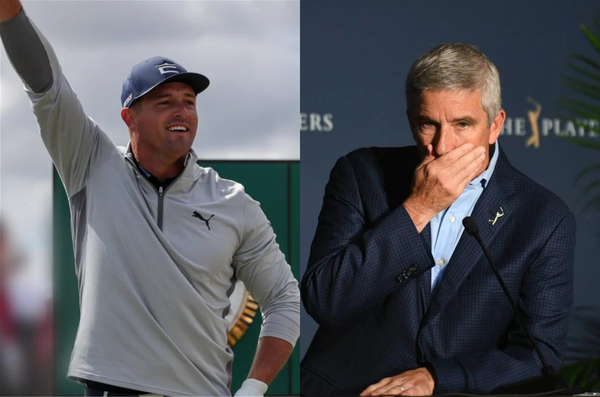
via Imago
Image Courtesy: IMAGO

via Imago
Image Courtesy: IMAGO
Professional golf’s bitter civil war, ignited by LIV Golf’s London launch in June 2022, has fractured the sport’s landscape. From Phil Mickelson’s initial departure to Jon Rahm’s recent $300 million move to LIV, the divide has forced fans to witness a diminished product, with PGA Tour ratings dropping 18% since 2023. The sport’s unified moments now come only through rare events like December 2024’s “Crypto.com Showdown” between Rory McIlroy, Scottie Scheffler, and LIV’s Brooks Koepka and Bryson DeChambeau.
But finally, there seems to be a silver lining as major championships begin breaking down the barriers. Following months of behind-the-scenes negotiations and Greg Norman’s departure as LIV’s CEO, both the US Open and the Open Championship have announced groundbreaking pathways for LIV golfers, marking a significant shift in professional golf’s power dynamics.
ADVERTISEMENT
Article continues below this ad
Majors’ move weakens PGA Tour’s leverage
The USGA’s announcement sends shockwaves through professional golf’s establishment. Starting at Oakmont in 2025, the top non-exempt LIV golfer ranked in the top three of their standings will receive a full exemption into the U.S. Open. Additionally, the top 10 players from LIV’s individual standings, as of April 7, 2025, will receive local exemptions, bypassing the first qualifying stage. The framework expands further in 2026 at Shinnecock Hills, where two full exemptions will be available through LIV’s standings.
This validation of LIV’s competitive structure comes at a critical moment for the PGA Tour. With merger negotiations extended beyond their original December 2023 deadline and now targeting April 2025, the Tour’s position has weakened considerably. As per The Golf Podcast, ‘their feet are to the fire’ because ‘it could no longer be that all four majors stood together.’ The timing is particularly challenging as Jay Monahan’s organization navigates the complexities of its recent $3 billion Strategic Sports Group (SSG) investment, intended to strengthen its hand in negotiations with the Saudi PIF.
The Tour’s mounting pressure became evident when Commissioner Jay Monahan acknowledged seeking assistance from former President Trump to mediate negotiations earlier this week. With an 18% drop in television ratings since 2023 and the loss of marquee players to LIV, the PGA Tour finds itself in an increasingly difficult position. What was once its strongest bargaining chip—access to major championships—has now been effectively neutralized by the USGA’s decision.
As negotiations weaken at the PGA Tour, a stark reality emerges: their rival’s growing strength may be limiting motivation for a merger deal.
LIV’s strengthening position dampens merger motivation
For LIV golfers, the major championships have fundamentally altered their calculus. Major champions Bryson DeChambeau and Brooks Koepka exemplify this new reality—their LIV success hasn’t hindered their major opportunities, with DeChambeau’s U.S. Open exemption secure until 2030 and Koepka’s PGA Championship victory ensuring his major status through 2028. Rising star Joaquin Niemann further validates this path, securing invitations to both the Masters and PGA Championship while competing primarily on LIV. With the USGA now offering direct qualification through LIV standings, the tour’s original criticism about world ranking points becomes increasingly irrelevant.
The shifting power dynamic is evident in broadcast developments as well. While the PGA Tour grapples with declining ratings, LIV Golf’s new FOX Sports partnership gives them mainstream visibility in American homes—the very audience the PGA Tour once exclusively commanded. With six new players joining since September and fresh sponsorship deals across their 13 teams, LIV has evolved from a disruptive force into a legitimate alternative for top talent.
ADVERTISEMENT
Article continues below this ad
View this post on Instagram
ADVERTISEMENT
Article continues below this ad
The implications for merger talks are significant. Former PGA Tour Commissioner Mike Whan once emphasized the importance of “compromise and collaboration,” but LIV’s strengthening position challenges this approach. With major championship pathways secured and growing commercial success, the new-age event appears increasingly content to operate independently. For the PGA Tour, which has already diluted Saudi PIF’s potential ownership stake through its $3 billion SSG deal, the window for achieving favorable merger terms narrows with each passing development.
What do you think about the PGA Tour’s options as their leverage continues to erode? Let us know in the comments section below.
ADVERTISEMENT
ADVERTISEMENT
ADVERTISEMENT
ADVERTISEMENT

